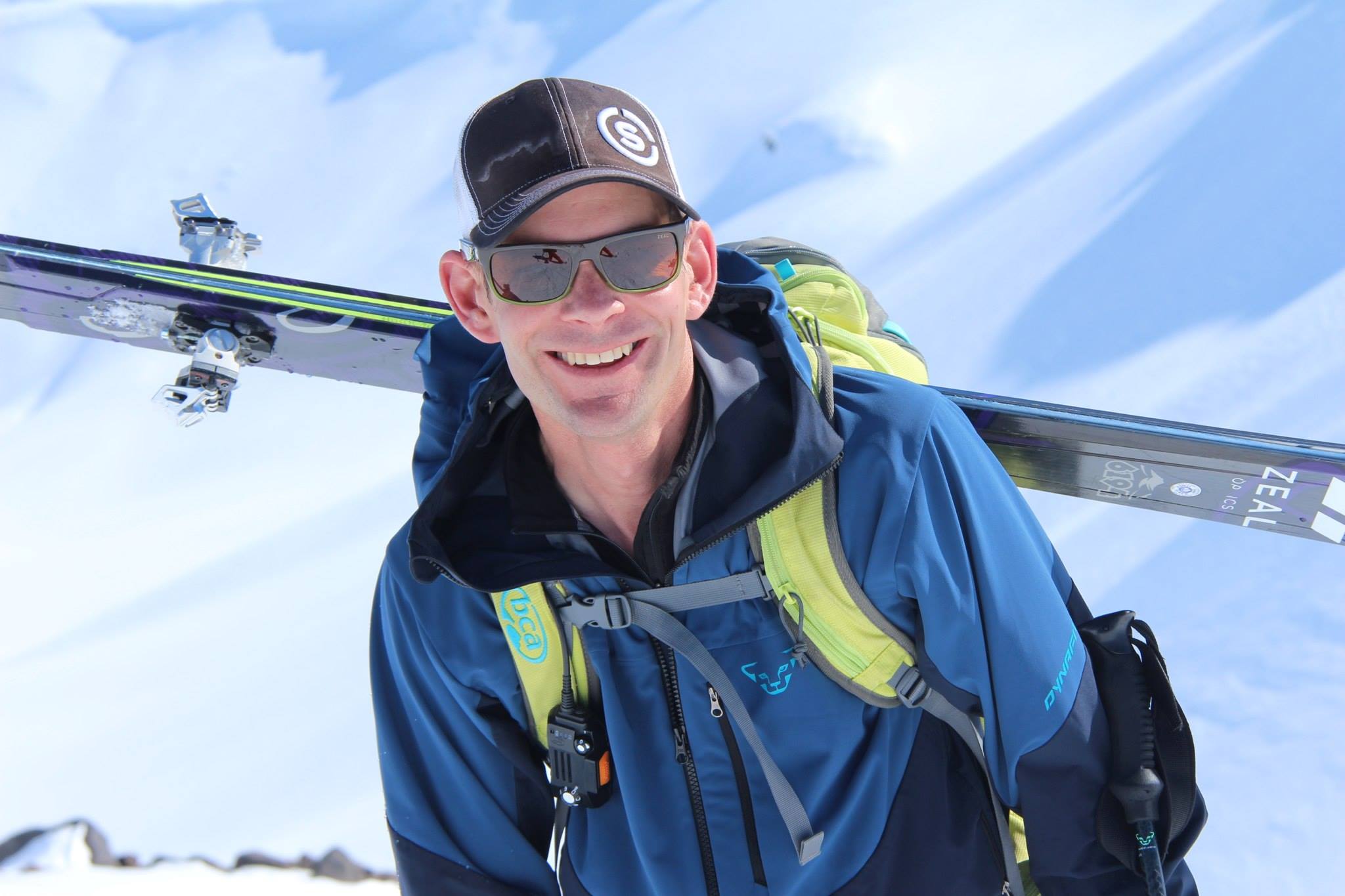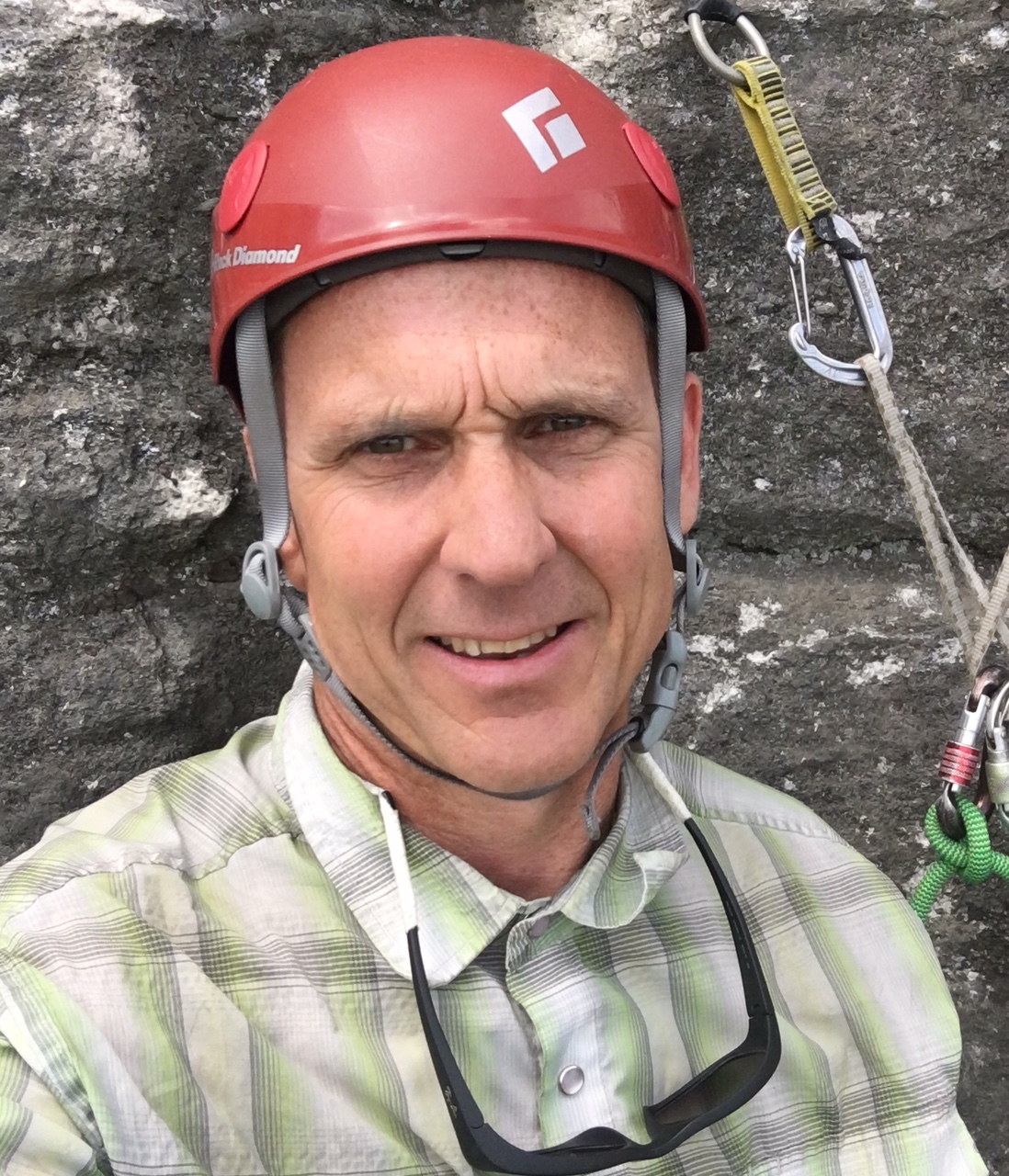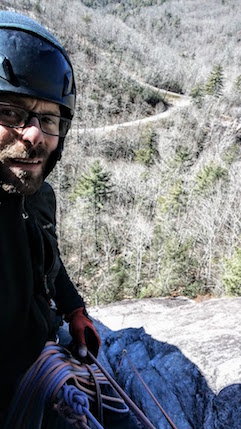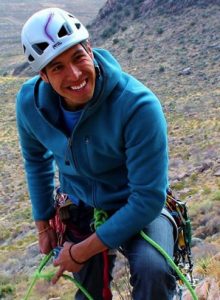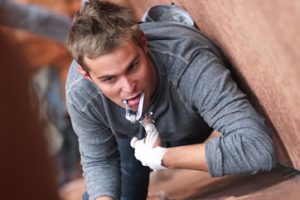What Stuck Ropes Taught Me About Guiding
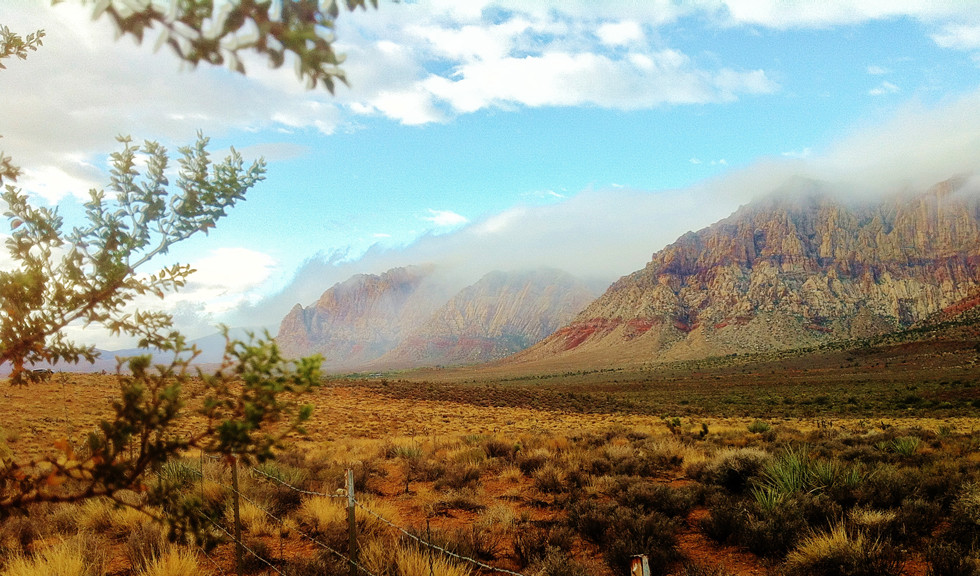
Derek Debruin received the Mountain Hardwear Scholarship, which paid for his Rock Guide Course/AE
 I watched the end of the green rope where it dangled a few feet below us. It moved in steady jolts away from us, heading down the wall, sometimes spasmodically, sometimes slithering. As it jumped and whipped along the rock, it stopped moving; however, Marc had not stopped pulling on it. My gaze flitted up from the rope end to the knot joining the green rope to the red rope, continued up to the skyline, back down the other side of the rope, and down to where the red rope rested below us. Therein lay the problem.
I watched the end of the green rope where it dangled a few feet below us. It moved in steady jolts away from us, heading down the wall, sometimes spasmodically, sometimes slithering. As it jumped and whipped along the rock, it stopped moving; however, Marc had not stopped pulling on it. My gaze flitted up from the rope end to the knot joining the green rope to the red rope, continued up to the skyline, back down the other side of the rope, and down to where the red rope rested below us. Therein lay the problem.
Thirty feet down the red rope was folded a few times over, wedging further and further into a thin corner crack as Marc tugged. We asked him to stop, and he paused while all three of us directed our gaze at the offending section of the cord.
Annoyed, I assessed the situation briefly. This was the last climb on the last day of the Aspirant Exam for the Rock Guide Course. I wanted everything to go smoothly. Further, I wanted to just be done and on the ground. Clearly, this was not going to be the case. I took a deep breath, exhaled, and relaxed.
“Hang tight for a moment here, please,” I directed Marc and Micah. “I’ll just head down and free the rope and then we can continue rappelling.”
I fixed the red line to the anchor and put myself on rappel. I double-checked Marc and Micah’s attachment to the anchor and descended the upper portion of the third pitch of “Ginger Cracks.” In short order I had freed the ropes and returned to the anchor. Marc resumed pulling the ropes while Micah and I went to great pains to ensure both the red line and the growing pile of green line did not find their way into any other cracks.
We soon found ourselves at the next anchor station, readying for our second rappel. Micah began pulling the red rope as I fed the line through the rappel rings, taking care to remain attentive to the key milestones as the rope end left the station and the joining knot came into view. Micah readied for his final pull and yelled, “Rope!”
Nothing happened.
I cursed under my breath. No more than 40 feet above us, the end of the red rope was stuck once again. We flipped the rope a few times, tugged from one side, pulled from the other side, and yarded on it, to no avail. I began searching for the end of the green rope and re-racking my protection, preparing for another lead on a climb that had otherwise gone relatively smoothly. Micah and Marc gave the rope one final hard tug with their combined weight. With a distinct snap it mercifully released and flew past us, though not before popping me in the in the forearm on its way by.
We tossed the ropes for our third rappel. The red rope sailed away smoothly, while gracefully tying itself into both an overhand on a bight and a figure eight before wrapping around a horn well to the right of the fall line. I blinked a moment in disbelief, instructed Marc and Micah on the rappel line they should take, and started down.
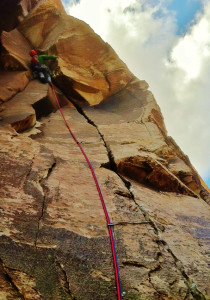 I freed the red rope of its knots and soon arrived at the next anchor station, where I cursed aloud, but out of ear shot of my mock clients. Both ropes lay twisted and folded in the sandstone fissures on either side of the anchor ledge, just out of reach below me. I breathed out heavily, forcing myself to relax yet again, lamenting my inefficient descent. I rappelled past the anchor to free the ropes yet again, stacking them neatly on the ledge. Finally, I yelled, “Off rappel!” to Micah, who began his descent.
I freed the red rope of its knots and soon arrived at the next anchor station, where I cursed aloud, but out of ear shot of my mock clients. Both ropes lay twisted and folded in the sandstone fissures on either side of the anchor ledge, just out of reach below me. I breathed out heavily, forcing myself to relax yet again, lamenting my inefficient descent. I rappelled past the anchor to free the ropes yet again, stacking them neatly on the ledge. Finally, I yelled, “Off rappel!” to Micah, who began his descent.
I could see the ground a mere 150 feet below us, if only we could get there. I just wanted to be done, settling into the relatively easy and non-technical task of navigating the hike back to the car.
The ropes pulled cleanly this time and the green rope landed partially on the ground. True to form, the red rope caught a gust on its way down and tangled firmly in a scrub oak familiar to Red Rock and stopped 30 feet from the bottom of the climb. When we were all safely back on the ground, I pulled the ropes down a final time. As the red rope tumbled from the rings it landed once again in the scrub oak. Putting on my best “unperturbed” face, I simply smiled at Micah and Marc, made a remark about the ropes having a mind of their own on occasion, and wrestled the rope out of the scrub oak. It finally came to rest amidst the sand and boulders at the foot of the first pitch. I only hoped my face did not belie my mixed feelings of frustration at the ropes but gratitude for solid ground underfoot.
The next day during debrief, Marc asked me how I felt about the previous day’s descent.
“It was exceptionally frustrating. The rest of the day seemed to be going well and then there was an issue of some kind with pretty much each rappel.”
“Well, I’m glad it happened,” Marc replied to what must have been a quizzical expression on my face. “When something doesn’t go quite right–that’s when I really get to see you work. You did fine. Your solutions were safe, relatively efficient, and you didn’t show your frustration.
“Your guiding day never goes perfectly, and that’s what I like to see as an examiner. I like to see you work and see how you handle the stress. You did what you were supposed to do–keep it positive, keep problem-solving, and keep going.”
I pondered this for a moment, soaking in the lesson. He was right, of course. The real crux of guiding is not what happens when everything goes perfectly. Instead, it is problem solving, error correction. It is how we react to unexpected hiccups, how we coach our clients through them, and how we maintain adequate risk management throughout that process. Those things are precisely what I learn from AMGA programs.
Derek received the Mountain Hardwear full tuition scholarship for 2013. Learn more about Derek by checking out his bio page on Fox Mountain Guides’ website.









